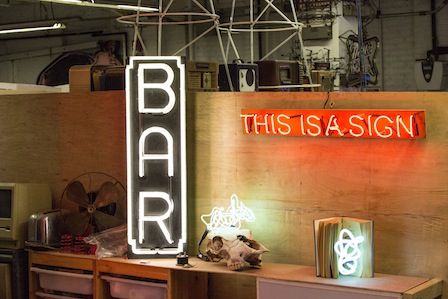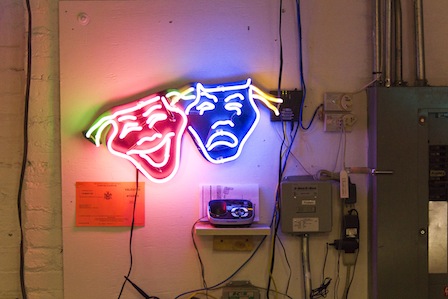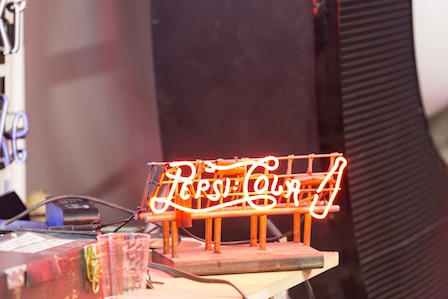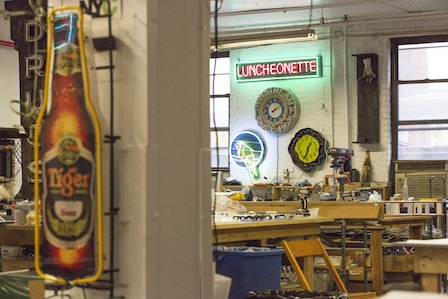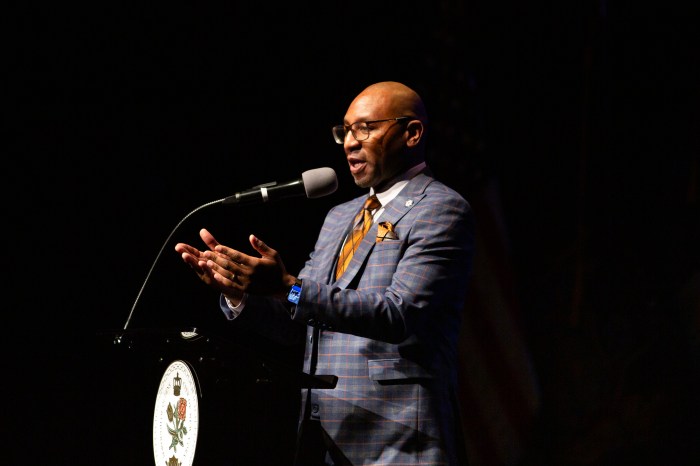ALAN CAPPER
“God invented it in lightning,” says Kenny Greenberg, owner of Krypton Neon in reply to the question, “Where does Neon come from?”
Although there had been efforts made with glass tubes and heat before, neon as we know it first made its appearance at the Chicago World Fair in 1892, and the drama and the vibrancy of its colors made it an instant success. In 1910 George Claude patented the process for making Neon. Kenny Greenberg and his company Krypton Neon have extended the possibilities of Neon way beyond the expectations of the early creators and he can justifiably be known as “Mr. Neon.”
He and his Long Island City studio are known around the world as the “go-tos” for creativity in Neon by people in theater, museums, corporations, entertainment and artists who wish to incorporate Neon in their work.
“In working with artists I see myself in the role of an enabler, often helping them to complete their ‘over-the-top’ artistic fantasies,” he said.
One work for the artist Lucille Fensta measured 25 feet by 13 feet, all made in white in the studio and shown in exhibitions around the world.
The studio has also produced the Neon deck for the Broadway musical “Mama Mia” and 22 Neon signs for the second film version of “The Producers.” The film production company had to produce a four block, 75 percent size replica of part of Times Square, and without Neon it could not look genuine.
Greenberg’s studio is a treasure trove of antique Neon signs, some of huge dimensions, newly commissioned works and works in progress. There are containers of colors, thousands of glass tubes, glass blowing materials, and open flames. The atmosphere is more artistic than industrial, and comes directly from Greenberg himself, who clearly loves what he does. He is an artist in glass and color with an astonishingly wide range of work, from the big Neon signs to smaller pieces like the theatrical faces of tragedy and comedy, about 18 inches high, which could grace any home.
Nothing in the early part of his life would have indicated that he would be an artist. He was born on Flatbush Avenue in Brooklyn into a family with scientific backgrounds.
“Unfortunately for those in the family who wanted me to follow a career in science, I began to show dangerous signs of an artistic temperament,” Greenberg said.
Despite this he began his own career in engineering, which he detested, but admits that it has been of some assistance in what he does now in technical matters.
First and foremost he is an artist, has always had artists as friends and particularly enjoys working with them on their projects.
He recalls that when he was growing up in Flatbush there were seven movie theaters there, and each one was a palace of Neon, intricate work with moving figures dancing around the outside of the buildings and huge art-deco designs covering much of the exteriors.
“I loved them, and for me that was the beginning of my love affair with Neon,” he said.
Neon conquered America in the 1920s and 30s, led by the entertainment industry, but even the most humble establishments could benefit from the addition of a small piece of Neon. “Diner” and “Eats” remain amongst the most collectible pieces from that period.
“There was a period a few years ago when the growth of digital signage seemed to point to the end of Neon,” said Greenberg. “Very little had changed in Neon technology in 100 years, and a magazine article described Neon making as ‘a dying art.’ I did not personally mind this, and thought that I would be very happy helping to keep this dying art alive.”
Neon is alive and well, and prospering. It is being featured in a number of fashion items, and there is a huge resurgence in commercial demand. The Calvin Klein Stores have ordered over 100 units for their national store group. The great Neon centers of the world are still there — New York, Las Vegas, London and Tokyo, which have extended the Neon art form into something uniquely their own.
“Every day I make Neon, and I find it beautiful and stunning. Glass is an unforgiving subject to work with but it still feels like exploring the nature of matter, but in a far more engaging way than if I had stayed as an engineering student. I am a fortunate man.”
RECOMMENDED STORIES

